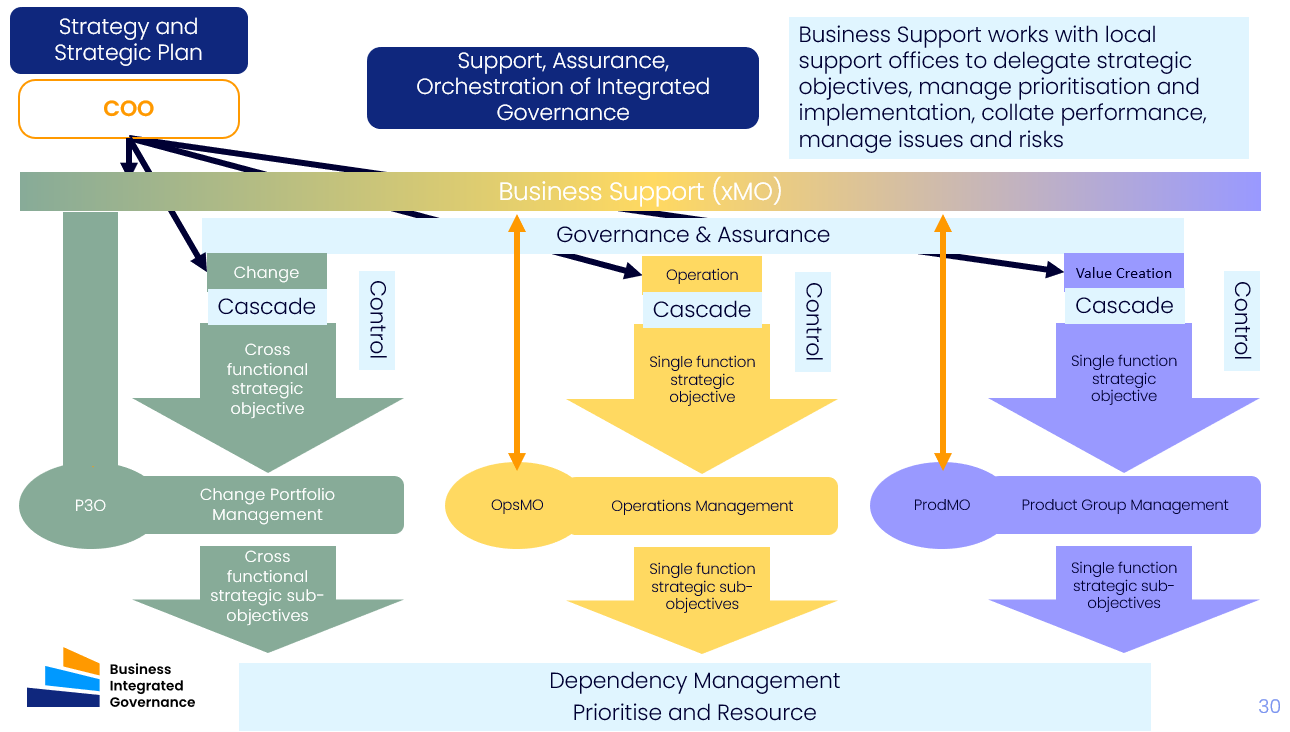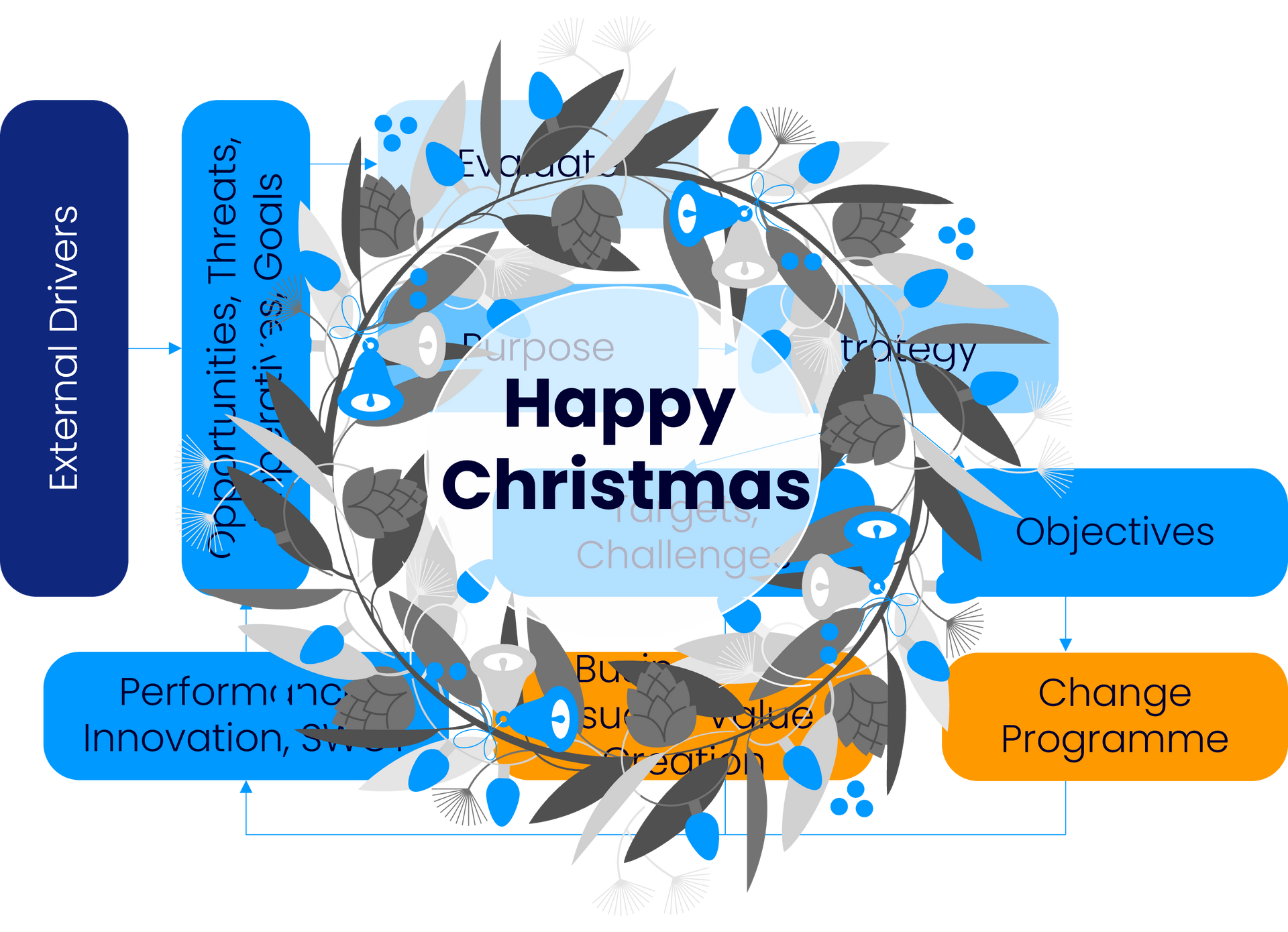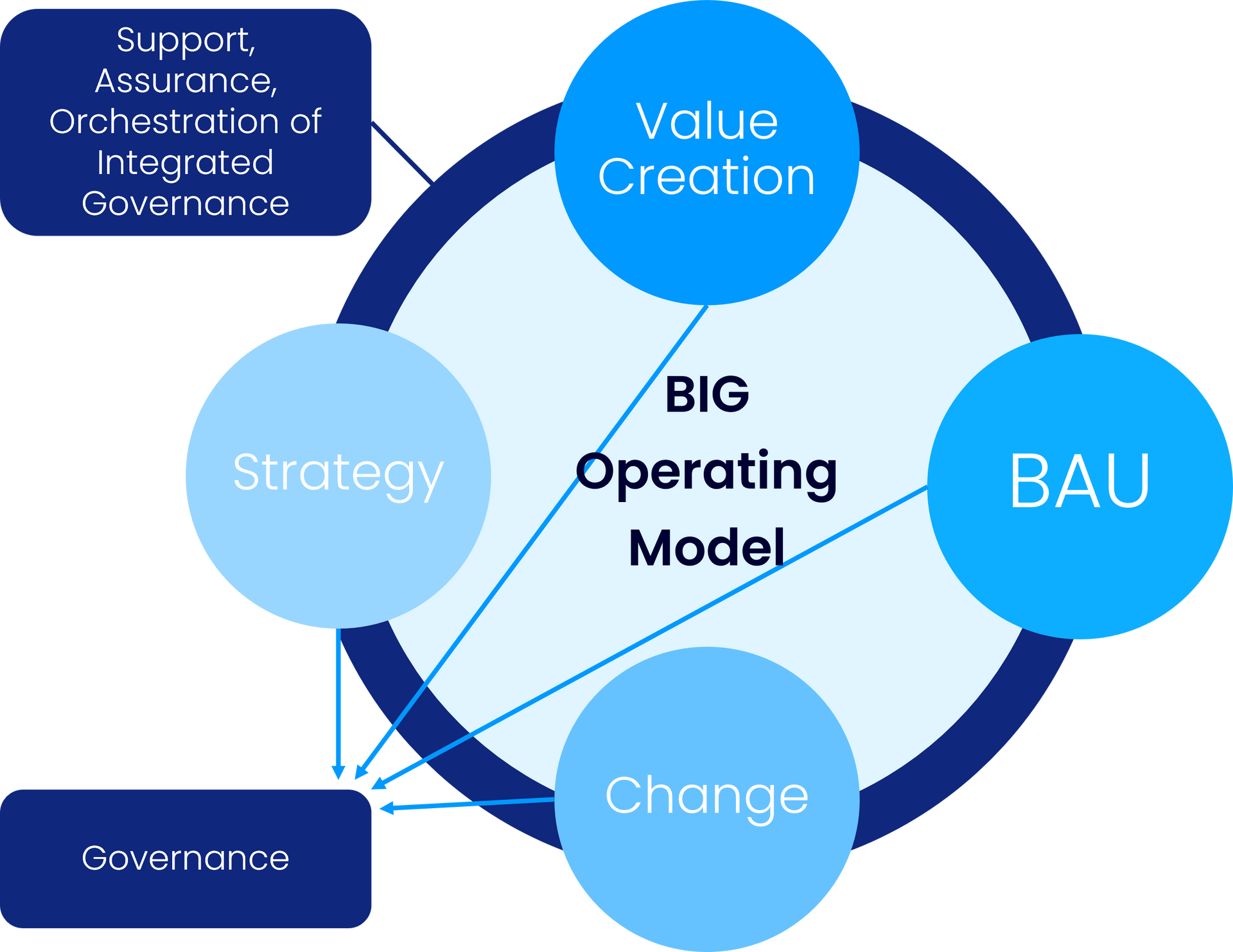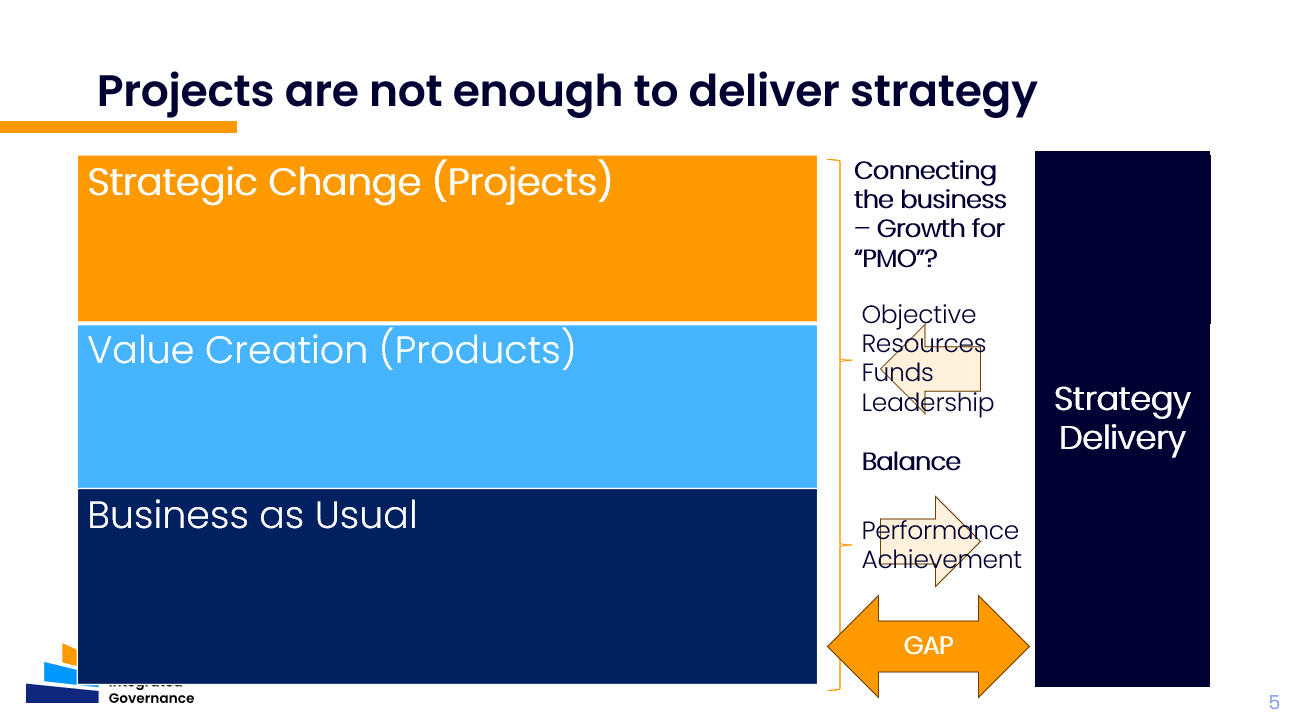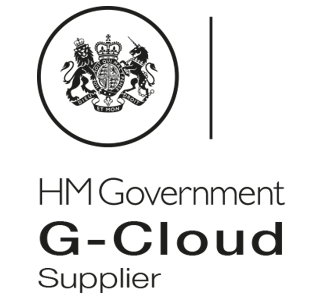Deepteam Blogs

Strategy delivery - how is your gearbox?
Whether you drive a Lamborghini or a Lada - however powerful, however great the sound system or engine note - the drive will be ruined by a whining transmission, a crunchy upshift - and a worry that you'll break down.
What does this have to do with strategy?
Many organisations have functions to focus on strategy development, others on strategy delivery through change. Finance exists to oversee investments. We have BAU functions keeping the business alive. Product development teams enriching our future. How does this all work together? Are all the cogs/gears in the strategy machine working in themselves and meshing together? Can you feel rattles, is there noise - do you worry the machine might seize up and break down?
The Business Integrated Governance Model (BIG) gives us a set of
fundamental principles and a
video with which you can sanity check what you are currently doing on the highway from strategy to delivery.
- Strategy is necessary to achieve purpose
- The organisation has structure
- Strategy management is ongoing
- Governance is integrated
- Governance facilitates information-based decision making
- ‘Run', 'change' and 'value generation' are prioritised and balanced
- Governance has a specific operating model

- Accountability underpins governance
- Those accountable are empowered
- Data underpins information
- Information underpins governance, accountability and assurance
- There is dedicated management for governance processes and orchestration
- Independent assurance provides check and balance
- Lifetime executive sponsorship
The BIG Maturity model shines a light on how your overall governance ecosystem is working, to enable to you define how it should work - enabling a roadmap of improvement to be quickly and simply started.
The model provides two layers of facility - one for use with exec level management to gain their engagement, the other a deep dive facility covering all the components of BIG and its enablers.
The workshop presented by David Dunning and Andrey Malakhov covered:
- Strategy Delivery is a problem - it offered a summary of key points out of previous sessions and simple research anyone can do in Google.
- Introduction of the BIG Model as a framework to assess readiness for strategy delivery with
- A walk through of the BIG Principles which can be used to engage stakeholders around
- Discussion of the need to engage high level stakeholders because of the depth and breadth of strategy delivery
- Introduction of Nemawashsi as an approach to deal with sensitive, business wide subject matter - and our First Steps approach to building consensus to do something - not necessarily immediately attempting to define what exactly
- A walk through of the BIG Maturity model itself, an example and an outline process for using it - with Example outputs
- Explanation of a possible engagement lifecycle - talking about early engagement, building enablers, culture change and sustainment
- Summary and what to do tomorrow

DAVID DUNNING
Deepteam
Chairman of the Board and CEO
Lead author on Business Integrated Governance
BSI G1 Governance Committee Member

ANDREY MALAKHOV
PMLogix
Managing Partner (consulting company). Over 20 years of experience in enterprise change and IT PPM & PMO management. 5 years of experience as a leader of strategic project management offices re-start and development.
We asked:
What do you want to get out of the session?
Ask - "Tips in being able to engage with stakeholders who have the vision but may not be able to join the dots to execute it well."
Response - The session was mostly about engaging stakeholders to create an ecosystem within which people who have a vision and are defining strategy can be enabled to join the dots and execute it well. The strategy was not about strategy development, portfolio management or change delivery - but about creating the environment into which these disciplines would fit.
Ask - "I was directed to this by a colleague - keen to use the session to learn about BIG more generally - although in the context of transformation programmes would be useful"
Response - The session provided a high level outline of the BIG Model, introduced the components, and outlined the principles. It was offered as the basis of a 'mental model' with which to engage people about their current readiness for strategy delivery.
Ask - "To review recent developments/directions in BIG and find out what I feel about them"
Response - The session covered the principles and introduced the BIG Readiness Model which is soon to be publicly released. It offered a very good application for the BIG Model.
Ask - "understand how you see the assessment working in terms of simple and BIG versions"
Response - The session introduced the BIG readiness model to be used at a high level with executives. We went through a simple example - and showed the Maturity aspects related to the simple example. We signposted a more detailed BIG Model for use in more in-depth discovery sessions.
Ask - "Absorbing best practices on ensuring strategy and PMO are aligned"
Response - The session did not go detail about the role of a 'PMO' in strategy delivery - but we did cover a principle under which busienss support (one form of which would be PMO). There are more detailed sessions available on the relation of busienss support and BIG, where the needs of support for BIG were contrasted with what a traditional PMO provides.
Ask - "Hear the current state and challenges of strategic alignment"
Response - The session was about creating the ecosystem within which strategic alignment would be managed - from the origination of strategy and the setting of objectives and targets - to the alignment of 'bottom up' initiatives / innovation to existing strategic direction.
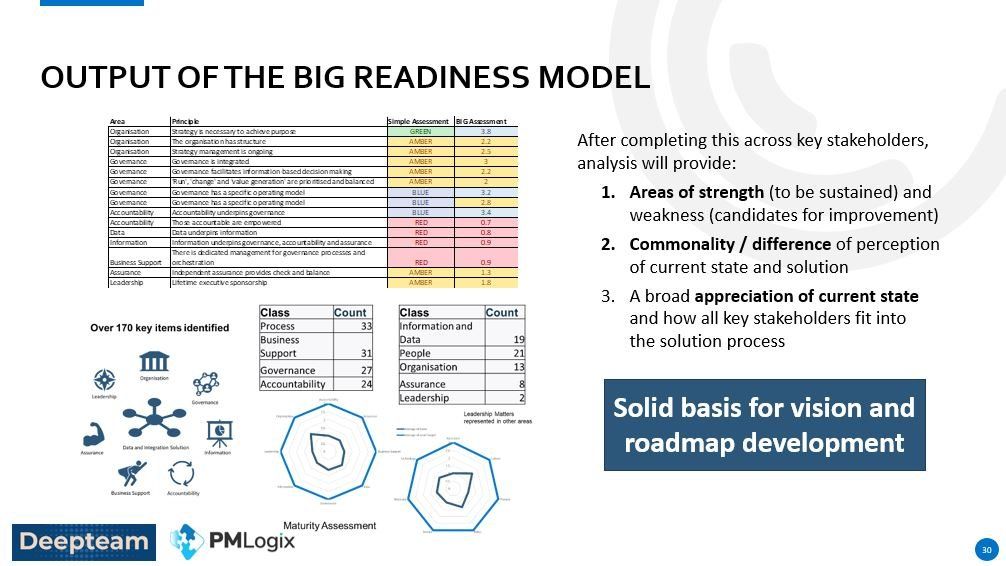
What is your situation – your role and main challenge faced? (are we in the same boat?)
Ask - "Implementing a major transformational digital program and some stakeholders whilst see it as important some expect it to be handed on a platter without being engaged and thoroughly supporting through resource allocation. Challenge is getting them to see change is not a one-way street"
Response - A key aspect to BIG is getting visibility of all workloads related to all objectives and targets (BAU, value generation and change). BIG is about making prioritisation key to setting empowerment which enables accountability. In the example mentioned in the 'ask' those stakeholders would know how 'important' an initiative is in relation to other workloads and would be engaged as to what aspect of an initiative they were accountable for and go through a process of resource allocation. Hence the 'two-way street' is a norm, not an exception.
Ask - "Having run very big and truly Transformation programmes, am sure that the plc board do not have a fully agreed strategic approach - makes my job much harder, and impacts on value provided by the programmes"
Response - one of the goals of a BIG approach means that a strategic approach is agreed, which will make the jobs of all those trying to manage BAU, change and value generation easier.
Ask - "We have been working with organisations to 'cascade' strategy for more than a decade so I think people are recognising and addressing many of these challenges today, as well as emergent challenges"
Response - There are organisations that are systematic with their strategy delivery, but there are enough that are not. Where organisations do not have clear line of sight from purpose to vision, through current state to strategy to strategic plan to operational plan to department / portfolio plans - the cascade - and re assembly of the strategic model is at risk - and hence the organisation is not maximising.
Ask - "Building PMO in start up environment at the same time that strategy is being developed and implemented"
Response - it will help an organisation to think of it's strategy information and strategy operating models, and to keep development separate. This is covered in more depth in other sessions. The transition of an organisation from the entrepreneurial state to a more stable delivery state is a challenge through the organisation, not just a PMO.
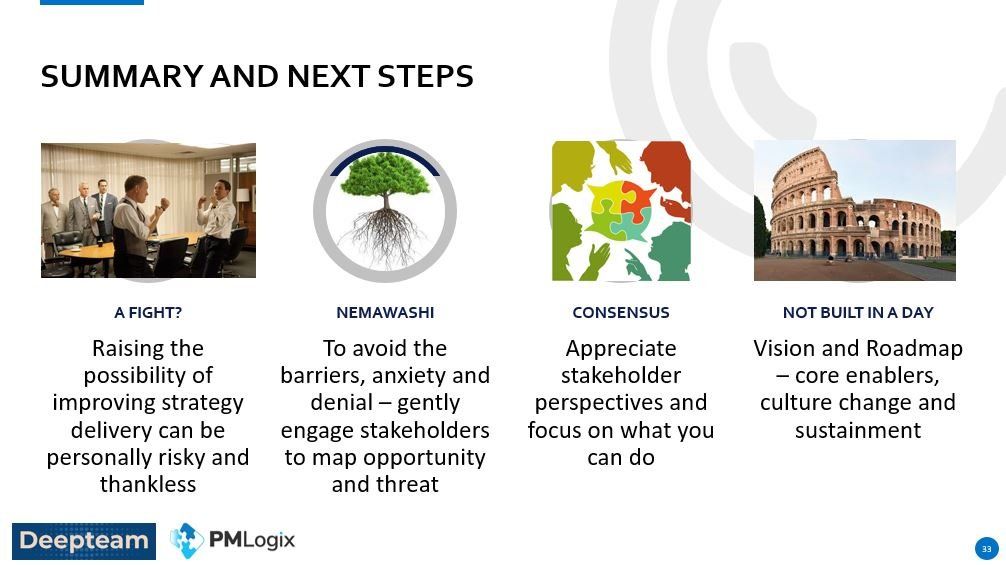
This session can be repeated privately for your organisation
Who should attend? Senior managers / Executives who:
- are finding the inertia against change too daunting at present
- are struggling to engage the organisation and get issues recognised and proposals for change on the table
- see an opportunity to improve their organisation’s effective implementation of strategy
Find out if you are flying or falling?

Access the
our discussion document covering 'Strategy to Delivery - objectively statusing readiness to achieve'
Please feel free to try using the model
Want something more?

